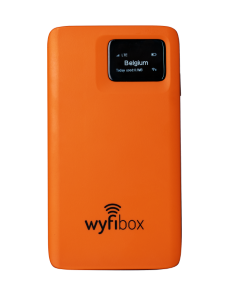Unlimited data, in over 165 countries... but at what cost?
Wyfibox review
Picture this: A mysterious box arrives at your front door. The box has only a single button. Press the button and you will receive untold riches. There’s just one catch: someone will pay the price.
Okay, so that’s the plot to Richard Kelly’s 2009 thriller The Box starring James Marsden and Cameron Diaz (based on an okay Twilight Zone episode based on a great Richard Matheson short story,) but it’s also not too far from my experience with the mysterious, orange Wyfibox, so far.
I had a reader reach out and ask about options for pocket WiFi they could take abroad and it got me thinking. You can technically take a local pocket WiFi device from a telco like Telstra overseas, but you’re locked to Telstra’s roaming rules and rates. The same goes for any other telco-supplied pocket WiFi.
A quick Google search led me to the Wyfibox. A bright-orange device marketed specifically towards data roaming and international travel. But I couldn’t find any more information on it. A quick email to the company’s CEO and this mysterious box full of Internet had arrived at my door in a number of days.
With the press of a button, it connected immediately to the Vodafone 4G network. The little digital display gave me a WiFi password and before I knew it, I was browsing the web with admirable speeds, unlimited data and more questions than I began with.
What is Wyfibox?
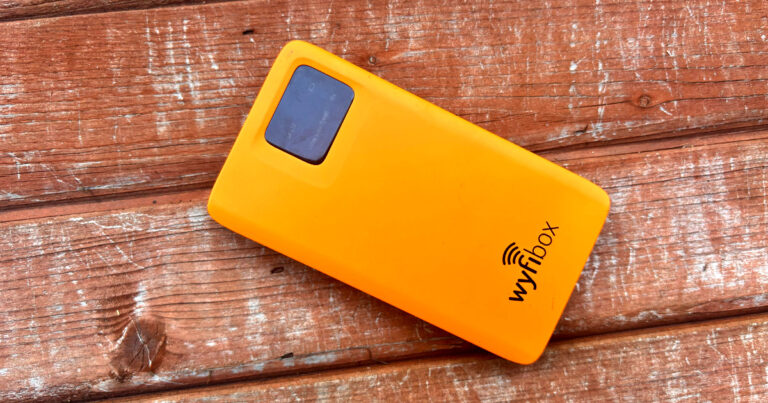
For all intents and purposes, Wyfibox is a pocket WiFi device like any other. A small brick about the size of your average power bank that connects multiple devices to the internet. It’s operated with a single button to power the device on and off and is charged via micro USB. The one major difference between it and most telco-supplied WiFi hotpots is that has no physical SIM tray, instead operating entirely on an eSIM that connects automatically in over 165 countries, and that it offers unlimited data with no strings attached.
How much does it all cost?
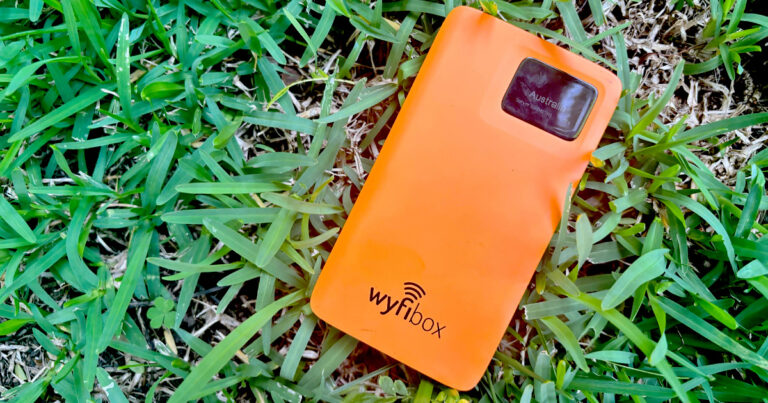
Wyfibox has an interesting pricing model. The biggest cost is the upfront €150 you pay for the device and delivery. At the time of writing, that works out to about $250 AUD, which certainly isn’t cheap for a pocket WiFi device.
As for usage, you only pay for the days you use. Powering on the Wyfibox will initiate a €10 charge for the day, then you’ll have access to unlimited data for the next 24 hours. So keeping things in Australian dollars, using the Wyfibox would cost you about $16 per day according to current conversion rates. That’s about $112 for a full week and around $480 for 30 days of usage.
Using it here and there is okay but using it every day will rack up a pretty big bill and fast.
Now if you’re a Vodafone customer, this is probably where you’ve tuned out. Vodafone’s $5 roaming deal gives customers access to all their usual data, call and text inclusions for just five smackeronis for every day that you access data, calls or text. You can also tether from your smartphone, creating your own portable hotspot using your Vodafone data. You’re not likely to go over 50, 180 or 360GB while travelling, but if you do, you’ll be charged $5 for every 1GB used in excess. Here’s a look at the Vodafone SIM plans that offer $5 roaming
Still, Wyfibox’s unlimited data offer has its merits, especially if you’re not a Vodafone customer.
Perhaps, the most unusual aspect of the whole product is the billing process. Essentially, we’re told, that Wyfibox isn’t legally allowed to charge the credit card you use to purchase the device. So instead, the company takes on the risk of allowing you to use as much data as you want for the first few weeks. Once you pay your first bill, the payment information used will be directly debited for further invoices going forward. But if you don’t respond to the first invoice, the company will block the device after three weeks.
Wyfibox speeds
Having only used the Wyfibox locally so far, I’ve assumed the role of an international traveller visiting Australia. And honestly, despite being on the lesser of the three mobile networks here, Vodafone, I’m still quite impressed with the speeds delivered by the magical internet box.
As it is with all mobile connections, speeds can vary dramatically but the Wyfibox has consistently achieved around 30Mbps on average, with no dips below 20Mbps (during my speed tests, at least.)
Wyfibox battery life
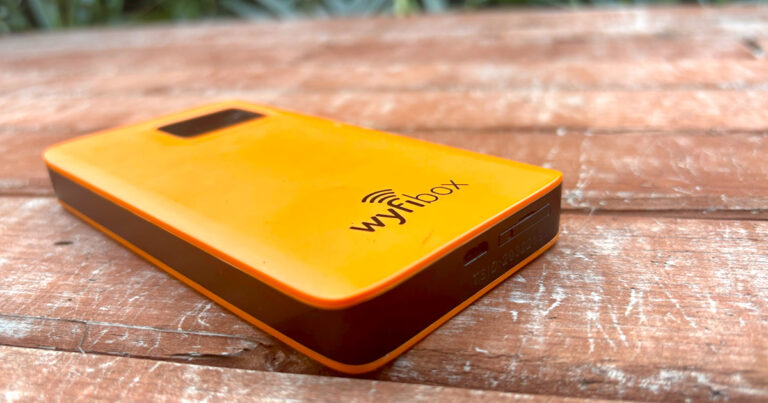
Wyfibox advertises 24 hours of battery life. Due to its nature, it’s not likely you’ll be using it for 24 hours straight, but even if you do push it to its limits, a quick charge will get you back to full battery in no time. In my tests, with occasional use, I’ve managed to go a week without needing to charge the Wyfibox.
To be honest, the biggest struggle you might have is finding a microUSB cable to charge it with if you’re abroad. Even from the comfort of my home, I’ve misplaced the pack-in micro USB cable multiple times only to find out my house has been officially overrun by USB-C.
THIS is why I insist on hoarding an unreasonable amount of charging cables.
Is the Wyfibox worth it for frequent flyers?
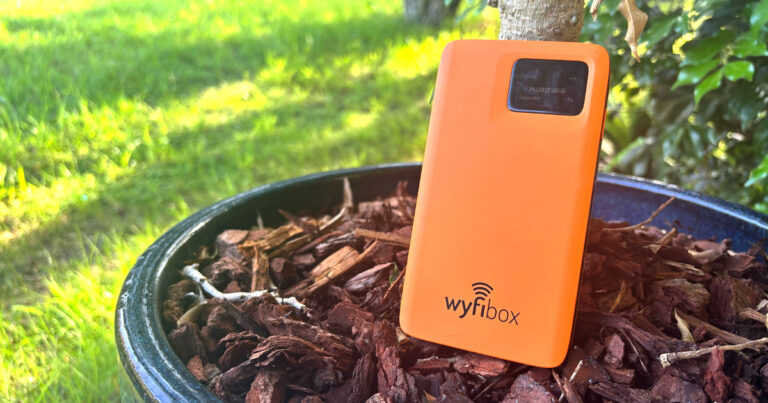
We could compare roaming options all day and truthfully, there are certainly more affordable options on the market in Australia. But this isn’t just a device for Australians, it’s available to anyone in the world, no matter where you live.
If you’re happy to run an eSIM on your phone without a second device, Airalo is a solid solution for you, but even its rates fluctuate from country to country.
The Wyfibox solution might be expensive, but it’s simple: A single portable modem that delivers unlimited data in over 165 countries, with no lock-in contracts or hidden fees.
It’s definitely not an everyday solution but considering the flexible payment option, it’s hard to ignore as an emergency backup solution. Something to pack in your bum bag just in case you need it.
Untold data riches with the press of a button, and nobody has to die for it (that we know of.)
Related Articles




